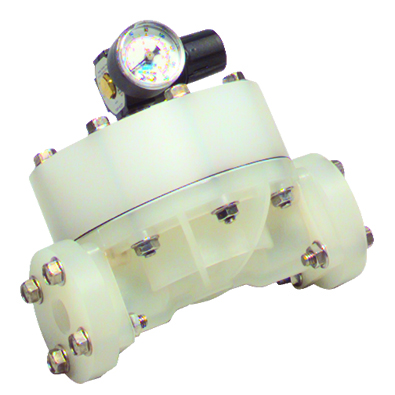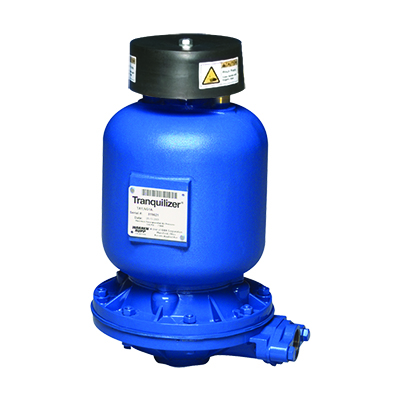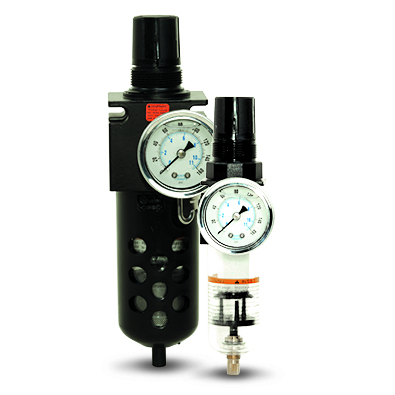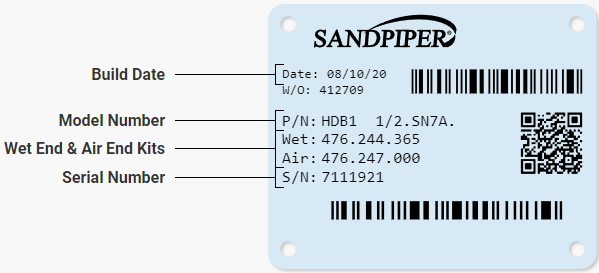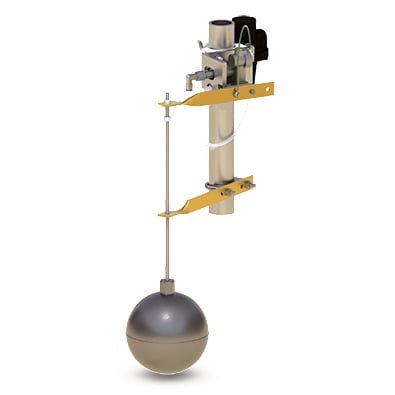 Plant maintenance managers understand the importance of keeping systems and machinery running smoothly and, in turn, keeping production stoppage as low as possible. Production stoppages mean lost revenue.
Plant maintenance managers understand the importance of keeping systems and machinery running smoothly and, in turn, keeping production stoppage as low as possible. Production stoppages mean lost revenue.
To avoid downtime, plant personnel must handle all planned maintenance, upgrades, and emergency repairs as quickly as possible. The good news is that one of the most common pieces of equipment in plants—air-operated double-diaphragm (AODD) pumps—is designed to make maintenance simple and cost-effective.
If an AODD pump fails, it can usually be fixed quickly for a reasonable cost. In this blog, Trent Ellis, After-Sales Service and Repair Representative at SANDPIPER, discusses some common AODD pump problems, ways to troubleshoot them, and more
The interview below has been edited slightly for clarity.
Q: What are some of the most common problems with AODD pumps—either on the air end, wet end, or both—and what are some potential causes?
Trent Ellis: Many different factors determine why a pump might fail. If it’s a pump failure due to wear, many times the first thing that goes is the diaphragm. The common reaction for a failed diaphragm is your product coming out of the exhaust of the pump. That is a dead giveaway. The only way that can happen is a failed diaphragm, which is the most common failure due to the natural wear of the pump.
The second most common is air-side wear. What happens is that the pump typically stalls out and blows excessive air out of the exhaust. This is caused by dirt and debris entering the pump via air supply and can be rectified with a simple air filter/regulator.
Q: Can you talk about what you can do to fix those problems?
A: With a diaphragm failure, the best thing is to isolate the pump, remove it, tear down the pump, and replace the diaphragms. This would also be a good time to replace the balls and seats. We recommend our complete air-side and wet-side repair kits. End users are encouraged to keep at least one or two extra kits on hand to ensure they have the parts they need to get their pump up and running quickly in the event of unforeseen downtime.
Q: In terms of preventative pump maintenance, what can users be doing to maintain their pump to avoid failure?
A: With preventative maintenance, a lot of first-time customers come to us and will say, ‘I have this pump, it’s been running for three months, it hasn’t failed yet, but when should I change it?’
Typically, our best answer is, ‘Let it fail.’ It’s an inconvenience to let it fail, obviously, because it’s not something that you’re going to expect, but let it fail that first time. Let’s say your pump lasts seven months. You run it again, it lasts six and a half months, and then you let it go again after a rebuild and it lasts six and a half to seven months.
This tells you your typical timeframe for your application. Best practice is to observe your pump under normal operating conditions for 5-6 months. At that time, you will be able to determine if it is time to perform maintenance on the pump.
Q: What are some of the most common items that users overlook, either when purchasing a pump, during installation, or when it’s running in an application?
A: When purchasing a pump, the most common item that end users overlook is their application. There are so many different factors that can affect the pump, like temperature, product, chemical compatibility of the product, the suction conditions—whether it’s a suction lift application or a flooded suction application—and also where the discharge of the product is going, whether it’s straight up, straight down, or straight horizontal. A lot of that can affect the pump.
Someone might be looking through a brochure that says that the pump will pump 150 gallons a minute, but that 150 gallons a minute is water on a suction lift application and it’s going straight back down.
If a customer asks, ‘This pump says it’s supposed to go 150 gallons a minute, I’m only getting 75, what’s the deal?’ That’s when I refer them to our applications team, and the applications team will say, ‘We understand that it’s advertised 150, you’re getting 75, this is the reason why. We suggest upsizing to this two-inch pump or this three-inch pump or larger pump to get the necessary flow that you require.’
Q: Is there anything specific users should check for in older pumps?
A: A lot of times—and this is often overlooked, especially if you’re pumping a product that is similar to water with no abrasives, just strictly fluid—people don’t think to check the metal. They don’t think to check the metal castings, because they think that they’ll hold up and never change. In reality, though, it is possible.
You have a lot of product flowing through there, kind of like a river going through rocks down a mountain. Eventually, it tends to erode some of those rocks away, similar to our pumps. And if you add abrasives to it, this process can speed up. There are some places within our pumps, mainly where the check balls sit, that can develop sharp edges, which can deteriorate the ball.
There are a couple of other places, like the outer diaphragm plate and the sealing edge of the outer chamber, that can develop sharp edges as well. For example, the flex points of the diaphragm. If you have a rubber diaphragm flexing on a sharp piece of metal, obviously that’s going to cause premature wear and failure.
Q: Are you getting any common questions in terms of pump maintenance, troubleshooting, or pump parts?
A: The most common question is, ‘Here’s a picture, why did this fail?’ And it all depends on the application as far as what our answer is. Typically, we come back with a lot of questions like, ‘What are you pumping? How many hours a day is the pump running? How long has this pump been in the application? Is this the first failure? Has the pump been rebuilt recently?’
Trust SANDPIPER to Provide the Very Best Pumping Equipment
Like any piece of equipment, AODD pump parts can prematurely fail if not operated properly. To avoid unplanned downtime, be sure to choose an AODD pump manufacturer that values quality and offers exceptional technical guidance.
SANDPIPER is a market-leading AODD pump manufacturer offering products engineered to handle the toughest applications and training support options to effectively extend pump life.
Our patented, exclusive, externally serviceable air distribution system (ESADS+) allows for complete access to the main air and pilot valves without removing the pump from service. Pilot-dynamic O-rings can be replaced quickly, repairing one of the most commonly replaced parts of the air distribution system. This operation can take over an hour to accomplish on a competitor pump, but with ESADS+, this process requires approximately five minutes—no unit draining, no lost product, and considerable savings in both uptime and maintenance costs.
Many of our heavy-duty pumps also come with an extended-wear package that features multiple porting options, heavy-duty plunger bushings/actuator pins, diaphragm wear pads, thicker, wetted castings, and heavy-duty, weighted check valve balls.
We offer a variety of tools and resources, including a chem guide, videos, and more to support your AODD pump, from initial selection to troubleshooting and maintenance.
If you have questions related to maintenance or troubleshooting, contact us today, reach out to a local distributor, or leave your question as a comment below.











